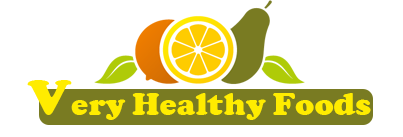What Makes People Eat Raw Food?
Throughout kitchens and restaurants around the world, there is a revolution taking place. People are turning to Raw Food as opposed to the cooked food that society has traditionally eaten. Which begs the question: Why?
One of the primary ways we experience the world around us is through what we eat, drink and think. So why then would people be foolish enough to put food into their bodies that isn't cooked? After some extensive research, it turns out these people might not be as foolish as originally thought.
The assumption behind cooking food is that the original form of Nature, as it exists, must be altered in some way in order for it to exist in an artificial form inside us. Or simply put, when feeding something natural (our body), it is necessary to give it something unnatural.
The problem is that when food is cooked it becomes less than it was before, never more. According to International Best-Selling author and Raw Food expert, David Wolfe, cooking alters organic molecules. When those molecules are ingested, they become part of our tissues. Thus eating cooked food alters our tissue at a fundamental level.Cooked food is dense. It leaves a toxic ash residue in the body after it has been processed. Over many years, the debris from this toxic residue accumulates and is deposited throughout our tissue. Eventually the toxins reach a crisis level, clogging and poisoning our body's systems which can lead to heart attacks, strokes and cancer.
What is Raw Food?
Raw food is alive, it still contains the vital nutrients and enzymes that gave the food life in the first place. Cooking food (above 239?F) destroys all of the enzymes and the food becomes "dead".
Enzymes are vital in that the body requires them to digest and absorb food, effectively helping to turn it into fuel.
Enzymes also are essential for many of the body's processes such as breathing, digestion, circulation, cognition and the prevention of inflammation and aging.
Cooked Food = No Enzymes
Eating cooked and processed foods makes one groggy, affects moods, lower's one's level of attention and interferes with the body's optimal functioning. A poor diet of highly cooked foods can also have a detrimental effect on longevity.
A cooked seed will not grow. It has had the life burnt out of it. How then would eating cooked food be the best way to help us grow?
Cooked food was not here when we first appeared on Earth.
Raw food was.
Raw-Animal or Raw-Plant Food?
Some people opt for a raw-animal diet, however typically the health of these people weakens over time, for a number of reasons. Namely meat can be very high in fat, cholesterol, calories and disease and bacterial contamination.
The other option is a raw-plant based diet.
People who follow a raw-plant based diet benefit from vital enzymes which allow the body to fully digest food, enzymes which are typically lost when food is cooked.
Health benefits include:
Having more energy
Skin has a much healthier complexion
Improved digestion
Weight Loss
A significant drop in the risk of developing heart and cardiovascular diseases [1]
Warning: Detox Alert
Raw/Live foods are naturally detoxifying, the more toxicity your body has, the more of a reaction you could have to these cleansing foods. You may look and feel worse before you look and feel better!
This is completely natural and is the body's way of releasing all the rubbish that has been stored up over time - if this happens to you, feel good as its working and you're on your way to a healthy active life.





















































